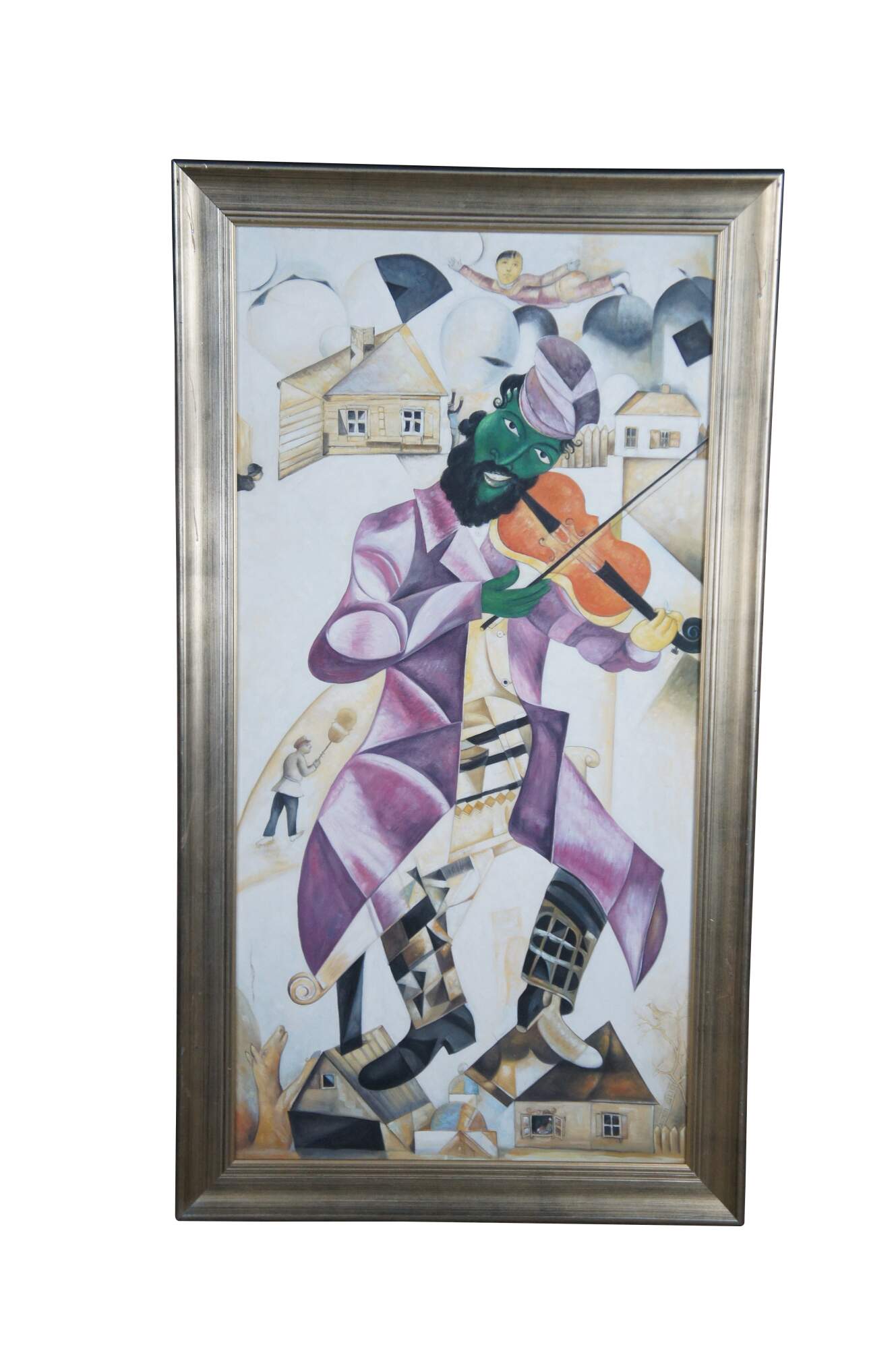
Shipping:
Free Shipping Included
Delivery:
Estimated 2-15 Business Days
Payments:
Credit Card, Check, Cash, PayPal, Apple Pay, Venmo
Returns:
30 Days 100% Money Back Guarantee, Buyer Pays Return Shipping
Description
An exquiste reproduction after Marc Chagall's, Green Violinist. Aptly Titled "The Green Fiddler", circa last quarter 20th Century. The painting is about 3/4 the size of the original andexecuted with remarkable similarities. Beautifully colored and detailed. The canvas is unsigned.
In Green Violinist Chagall evoked his homeland. The artist’s nostalgia for his own work was another impetus in creating this painting, which is based on earlier versions of the same subject. His cultural and religious legacy is illuminated by the figure of the violinist dancing in a rustic village. The Chabad Hasidim of Chagall’s childhood believed it possible to achieve communion with God through music and dance, and the fiddler was a vital presence in ceremonies and festivals.
Marc Chagall was born on July 7, 1887, in Vitebsk, Russia. From 1907 to 1910 he studied in Saint Petersburg, at the Imperial Society for the Protection of the Arts, and later with Léon Bakst. In 1910 he moved to Paris, where he associated with Guillaume Apollinaire and Robert Delaunay and encountered Fauvism and Cubism. He participated in the Salon des Indépendants and the Salon d’Automne in 1912. His first solo show was held in 1914 at Der Sturm gallery in Berlin.
Chagall visited Russia in 1914 and was prevented from returning to Paris by the outbreak of war. He settled in Vitebsk, where he was appointed Commissar for Art in 1918. He founded the Vitebsk Popular Art School and directed it until disagreements with the Suprematists resulted in his resignation in 1920. He moved to Moscow and executed his first stage designs for the State Jewish Chamber Theater there. After a sojourn in Berlin, Chagall returned to Paris in 1923 and met Ambroise Vollard. His first retrospective took place in 1924 at the Galerie Barbazanges-Hodebert, Paris. During the 1930s he traveled to Palestine, the Netherlands, Spain, Poland, and Italy. In 1933 the Kunsthalle Basel held a major retrospective of his work.
During World War II Chagall fled to the United States. The Museum of Modern Art, New York, gave him a retrospective in 1946. He settled permanently in France in 1948 and exhibited in Paris, Amsterdam, and London. In 1951 he visited Israel and executed his first sculptures. The following year the artist traveled in Greece and Italy. During the 1960s Chagall continued to travel widely, often in association with large-scale commissions he received. Among these were windows for the synagogue of the Hadassah University Medical Center, Jerusalem (installed in 1962); a ceiling for the Paris Opéra (installed in 1964); a window for the United Nations building, New York (installed in 1964); murals for the Metropolitan Opera House, New York (installed in 1967); and windows for the cathedral in Metz, France (installed in 1968). An exhibition of the artist’s work from 1967 to 1977 was held at the Musée du Louvre, Paris, in 1977–78, and a major retrospective was held at the Philadelphia Museum of Art in 1985. Chagall died on March 28, 1985, in Saint-Paul-de-Vence, France.
Condition
Good Vintage Condition
Dimensions
29.5" x 2" x 53.5" ; 24" x 48"